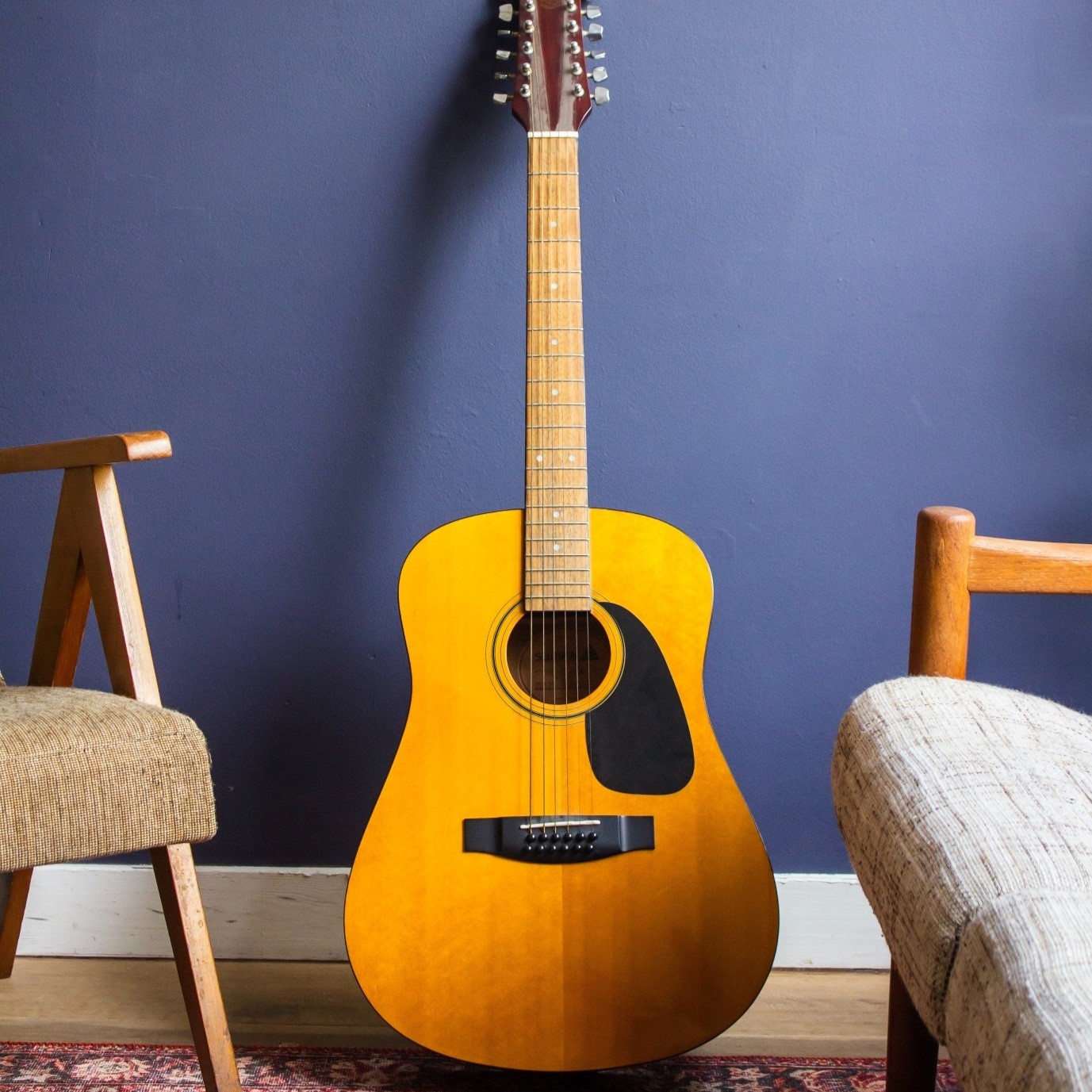

Articles
How To Store A Guitar Without A Case Or Stand
Modified: January 19, 2024
Learn how to store your guitar safely and securely without a case or stand with our informative articles. Find expert tips and tricks to protect your instrument.
(Many of the links in this article redirect to a specific reviewed product. Your purchase of these products through affiliate links helps to generate commission for Storables.com, at no extra cost. Learn more)
Introduction
When it comes to musical instruments, proper storage is essential to ensure their longevity and performance. This is especially true for guitars, as they are made of delicate materials and intricate components that can be easily damaged if not stored correctly. While using a case or stand is the ideal way to store a guitar, there are situations where these options may not be available or practical. In this article, we will explore how to store a guitar without a case or stand, offering alternative solutions to keep your instrument safe and sound.
While it is always recommended to have a case or stand for your guitar, there may be instances where you find yourself without these essential accessories. Perhaps you’re on the go and need to temporarily store your guitar, or maybe you’ve misplaced your case or stand. Regardless of the reason, it’s important to take the necessary precautions to protect your instrument from potential damage.
Before delving into the different ways to store a guitar without a case or stand, let’s highlight the importance of proper guitar storage.
First and foremost, proper storage helps to maintain the guitar’s structural integrity. Guitars are delicate instruments, susceptible to changes in temperature, humidity, and physical impact. By storing your guitar appropriately, you reduce the risk of warping, cracking, and other damage that can affect its playability.
Secondly, proper storage protects the guitar’s finish. The finish of a guitar serves both a functional and aesthetic purpose. It shields the wood from moisture, provides a smooth surface for playing, and gives the guitar its unique appearance. Storing the guitar correctly helps to preserve the finish, preventing scratches, discoloration, and other cosmetic damage.
Lastly, proper storage ensures the guitar’s overall performance. When a guitar is stored improperly, it can lead to issues such as string buzz, fretboard dryness, and even damage to the internal components. By taking the time to store your guitar correctly, you can maintain its optimal playability and sound quality.
Now that we understand the importance of proper guitar storage, let’s explore the factors to consider when storing a guitar without a case or stand.
Key Takeaways:
- Proper storage is crucial for maintaining the longevity and performance of your guitar. Alternative options such as wall hanging, using a guitar hanger, or storing on a shelf provide viable solutions when a case or stand is not available.
- Prioritize the safety and accessibility of your guitar by considering alternative storage options like gig bags, under-bed storage, or DIY stands. Regular inspection and maintenance are essential to ensure your instrument stays in optimal condition.
Read more: How To Store A Guitar In A Case
Importance of Proper Guitar Storage
Proper guitar storage is crucial for several reasons. By taking the necessary steps to store your guitar correctly, you can ensure its longevity and maintain its value over time. Here are some key reasons why proper guitar storage is of utmost importance:
- Protection against physical damage: Guitars are vulnerable to physical impact, which can result in dents, scratches, or even structural damage. By storing your guitar in a safe and secure manner, you reduce the risk of accidental bumps or falls that can significantly affect its playability and aesthetics.
- Prevention of temperature and humidity fluctuations: Extreme temperature changes and humidity levels can wreak havoc on a guitar. These fluctuations can cause the wood to expand and contract, leading to warping, cracking, or even separation of the components. Proper guitar storage allows you to control the temperature and humidity levels, minimizing the risk of such damage.
- Shielding against dust and debris: Dust and debris can accumulate on the surface and in the crevices of a guitar. Over time, this can affect the instrument’s performance and overall condition. By properly storing your guitar, whether it’s in a case or a dedicated storage option, you can protect it from the accumulation of dust and debris.
- Preservation of the guitar’s finish: The finish of a guitar not only adds to its visual appeal but also protects the wood from moisture and wear. Improper storage can result in scratches, fading, or discoloration of the finish, diminishing the guitar’s overall appearance and potentially lowering its resale value.
- Preventing string and fretboard damage: Storing a guitar without proper support can put unnecessary strain on the strings and fretboard. This can lead to string buzz, excessive wear on the frets, and even damage to the neck. By using appropriate storage options or techniques, you can alleviate these issues and maintain optimal string and fretboard condition.
- Preserving the guitar’s sound quality: Storing a guitar in an environment with high humidity or extreme temperature changes can negatively impact its sound quality. As the wood absorbs or releases moisture, the guitar’s tonal properties can be affected, resulting in a dull or distorted sound. Proper storage helps to maintain consistent humidity levels and preserve the guitar’s natural resonance and tonal characteristics.
Overall, proper guitar storage is essential for protecting your instrument from physical damage, climate fluctuations, dust, and debris. It also helps to preserve the guitar’s finish, prevent string and fretboard damage, and maintain its optimal sound quality. By taking the time to store your guitar correctly, you can ensure its longevity and enjoy years of playing and creating beautiful music.
Factors to Consider for Storing a Guitar Without a Case or Stand
When you find yourself without a guitar case or stand, there are several important factors to consider in order to properly store your instrument. By keeping these factors in mind, you can minimize the risk of damage and ensure the guitar remains in good condition. Here are some key considerations:
- Protection from physical impact: The first and most crucial factor is to protect the guitar from any potential physical damage. Ensure that the area where you plan to store the guitar is free from any hazards or objects that may accidentally hit or bump into it. Additionally, choose a storage option that provides a reliable and stable support for the guitar.
- Temperature and humidity control: It’s important to maintain a consistent and suitable environment for your guitar, even without a case or stand. Extreme temperature changes and high humidity levels can cause damage to the wood and other components of the instrument. Find a storage location that offers stable temperature and humidity levels, avoiding areas exposed to direct sunlight, heaters, or drafts.
- Accessibility: Consider how easily you can access the guitar when it’s stored without a case or stand. If you plan on playing the guitar frequently, it’s important to choose a storage option that allows for easy retrieval and quick setup.
- Protection from dust and debris: Even without a case, it’s crucial to protect the guitar from dust and debris that can accumulate on the instrument. Choose a storage location that minimizes exposure to airborne particles and consider covering the guitar with a clean cloth or soft material when not in use.
- Adequate support: Without a stand, you’ll need to provide appropriate support to ensure the guitar is stored safely. Avoid placing your guitar on unsuitable surfaces like hard floors or sharp edges, as they can cause damage. Look for alternative storage options that offer secure support, such as wall hanging, guitar hangers, or mounting hooks.
- Security: Consider the security of your guitar when storing it without a case or stand. If you’re storing it in a shared space or public area, make sure it’s not easily accessible to others. Additionally, consider using locking mechanisms or security measures to further protect your instrument.
- Frequent inspection and maintenance: Regularly inspect your guitar for any signs of damage or issues. Without a case or stand, it’s important to keep a close eye on the guitar’s condition. Look for any changes in the instrument’s appearance, such as cracks, dents, or loose hardware. Perform routine maintenance tasks like cleaning, string replacement, and neck adjustments as necessary.
By considering these factors, you can make informed decisions on how to store your guitar without a case or stand. Remember to prioritize the protection of your instrument, maintain a suitable environment, provide adequate support, and regularly inspect and maintain the guitar to keep it in optimal condition.
Choosing an Appropriate Storage Location
When it comes to storing a guitar without a case or stand, selecting a suitable storage location is crucial for ensuring the safety and preservation of your instrument. Here are some factors to consider when choosing an appropriate storage location:
- Temperature and humidity: Avoid storage areas that experience extreme temperature changes or high humidity levels. Fluctuations in temperature and humidity can damage the wood and other components of the guitar. Look for a storage location that maintains a consistent and suitable environment, preferably with controlled temperature and humidity levels.
- Avoid direct sunlight: Exposure to direct sunlight can cause the guitar’s finish to fade or crack over time. Choose a storage location away from windows or other sources of direct sunlight. If sunlight is unavoidable in the area, consider covering the guitar with a cloth or using UV protection products to mitigate potential damage.
- Avoid moisture prone areas: Keep your guitar away from areas in the house that are prone to moisture, such as basements, attics, or bathrooms. Moisture can lead to warping, mold growth, and other damage. Look for a dry location with good ventilation to store your instrument.
- Protection from dust and debris: Find a storage location that minimizes exposure to dust and debris. Covered spaces like closets or cabinets can help protect the guitar from accumulating unwanted particles. Consider using a cloth or cover to shield the guitar when it’s not in use.
- Avoid areas with high traffic: Choose a storage location that is less likely to be disturbed by frequent foot traffic. Placing your guitar in a high-traffic area increases the risk of accidental bumps or collisions. Find a quieter spot where the guitar will be less susceptible to such incidents.
- Security and accessibility: Consider the security of the storage location and the ease of access. If you need to store your guitar in a shared space, make sure it’s not easily accessible to others. You may also want to consider using locking mechanisms or security measures to further protect your instrument. Additionally, choose a location that allows for easy retrieval and quick setup when you want to play the guitar.
- Stability and protection: Ensure that the storage location provides a secure and stable support system. Avoid placing the guitar on unstable surfaces or near sharp edges that could cause damage. Look for alternative storage options like wall hanging, using guitar hangers or mounting hooks, or utilizing a guitar rack or stand to securely hold your instrument.
- Pest control: Take measures to protect your guitar from pests, such as insects or rodents. Keep the storage area clean and free of food crumbs or other attractants. Consider using pest deterrents, such as repellents or traps, if necessary.
By carefully considering these factors, you can choose an appropriate storage location that provides optimal conditions for your guitar. Remember to prioritize temperature and humidity control, avoid direct sunlight and moisture-prone areas, protect the guitar from dust and debris, select a secure and accessible location, ensure stability and protection, and take necessary precautions for pest control. With the right storage location, you can keep your guitar in excellent condition even without a case or stand.
Preparing the Guitar for Storage
Before storing your guitar without a case or stand, it is important to take certain steps to ensure its protection and maintain its condition. Preparing the guitar for storage will help minimize the risk of damage and keep it in optimal shape during the storage period. Here are some essential steps to consider:
- Clean the guitar: Start by thoroughly cleaning the guitar to remove any dirt, sweat, or residue that may have accumulated. Use a soft cloth to gently wipe down the body, neck, and strings. You can also use a specialized guitar cleaner or polish, following the instructions provided by the manufacturer.
- Remove the strings (optional): If you’re planning on storing the guitar for an extended period, you may consider removing the strings. This can relieve tension on the neck and prevent the strings from corroding or leaving marks on the fretboard. However, if you prefer to keep the strings on, make sure to loosen them slightly to reduce the overall tension on the guitar.
- Protect the fretboard: Apply a small amount of fretboard conditioner or lemon oil to a clean cloth and gently rub it onto the fretboard. This helps to moisturize and condition the wood, keeping it hydrated and preventing it from drying out or cracking during storage.
- Secure the hardware: Check that all the hardware, such as knobs, switches, and strap buttons, are securely tightened. Loose hardware can get damaged or cause scratches if not properly secured. Take a moment to inspect the screws or bolts and tighten them if necessary.
- Protect the finish: To safeguard the guitar’s finish, consider applying a thin layer of guitar-safe wax or polish. This helps to protect the paint or lacquer from potential scratches or discoloration. Be sure to choose a wax or polish specifically formulated for use on guitars.
- Use a guitar cover or cloth: If you’re storing the guitar in an open area without a case or stand, it’s a good idea to cover it with a clean cloth or use a guitar-specific cover. This provides an additional layer of protection against dust, debris, and accidental scratches.
- Store the guitar in an upright position: When storing the guitar without a case or stand, it is best to position it in an upright position. This helps to maintain the guitar’s structural integrity and prevents any unnecessary stress on the neck or body.
- Consider climate control: If you live in an area with extreme climate conditions, consider investing in a climate control device or dehumidifier to regulate the temperature and humidity levels in the storage area. This can help prevent any potential damage caused by fluctuations in environmental conditions.
- Regularly monitor the guitar: Throughout the storage period, make it a habit to check on the guitar periodically. Inspect it for any signs of damage, such as cracks, warping, or changes in the finish. Address any issues promptly to prevent further damage and ensure the guitar’s well-being.
By following these steps and taking the necessary precautions, you can ensure your guitar is properly prepared for storage without a case or stand. Cleaning the guitar, protecting the fretboard and finish, securing the hardware, and storing it in an upright position are all important aspects of preparing the guitar for storage. With proper preparation, you can have peace of mind knowing that your guitar is well cared for, even without a dedicated case or stand.
Read more: How To Store Guitar Cases
Hanging the Guitar on the Wall
Hanging the guitar on the wall is a popular and visually appealing option for storing a guitar without a case or stand. Not only does it serve as a space-saving solution, but it also allows you to showcase your instrument as a decorative piece. Here’s a step-by-step guide on how to safely hang your guitar on the wall:
- Select a suitable wall: Choose a wall in your home that is sturdy and can support the weight of the guitar. Avoid walls with excessive moisture or temperature fluctuations, as these can adversely affect the instrument.
- Find the right guitar hanger: Look for a reliable and secure guitar hanger that is specifically designed for wall mounting. Ensure that it is made of high-quality materials and has a foam or rubber padding to protect the guitar’s finish.
- Measure and mark the location: Measure the distance between the guitar’s headstock and body to determine the ideal height for hanging the guitar. Use a pencil or tape to mark the spot on the wall.
- Locate a stud: Use a stud finder to locate a stud or wall anchor for added support. It is important to secure the hanger to a stud or use appropriate wall anchors to ensure the stability and safety of the guitar.
- Position and install the hanger: Align the guitar hanger with the marked spot on the wall and secure it using the appropriate screws or mounting hardware. Make sure it is firmly attached to ensure the guitar’s stability.
- Hang the guitar: Gently hang the guitar on the hanger, ensuring that it rests securely and the neck is properly supported. Take extra care to prevent any accidental slips or falls during the hanging process.
- Adjust and straighten: Check the guitar’s position and adjust as needed to ensure that it is straight and level on the wall. Take a step back and visually inspect the guitar’s alignment to ensure it looks aesthetically pleasing.
- Regularly inspect and maintain: Keep an eye on the guitar while it’s hanging on the wall. Regularly inspect the hanger’s condition and verify that the guitar is securely in place. Perform routine maintenance tasks, like cleaning and restringing, to keep the guitar in optimal condition.
By following these steps, you can safely and securely hang your guitar on the wall. Remember to choose a suitable wall, find the right guitar hanger, measure and mark the location, locate a stud or use appropriate wall anchors, install the hanger securely, hang the guitar carefully, adjust and straighten as needed, and regularly inspect the setup. Hanging the guitar on the wall not only provides a practical storage solution but also adds a stylish and artistic element to your living space.
To store a guitar without a case or stand, lean it against a wall with the neck facing upwards to prevent any damage to the neck or body. Make sure it’s in a safe and stable position to avoid any accidents.
Using a Guitar Hanger or Mounting Hook
A guitar hanger or mounting hook is a convenient and secure option for storing your guitar without a case or stand. It allows you to hang the guitar vertically, keeping it off the floor and providing easy access when you want to play. Here’s a step-by-step guide on how to use a guitar hanger or mounting hook:
- Select a suitable location: Choose a wall in your home that is strong and sturdy enough to support the weight of the guitar. Ensure that the area is free from excessive moisture or temperature fluctuations that can potentially damage the instrument.
- Choose the right guitar hanger: There are various types of guitar hangers and mounting hooks available, including wall-mounted hangers, ceiling-mounted hooks, or floor-to-ceiling hooks. Select the option that best suits your space and provides adequate support for your guitar.
- Measure and mark the location: Measure the distance between the guitar’s headstock and body to determine the ideal height for hanging the guitar. Use a pencil or tape to mark the spot on the wall where you will place the hanger or hook.
- Locate a stud: Use a stud finder or a tapping method to locate a stud behind the wall. Hanging the hanger or hook on a stud will provide the necessary strength and stability to support the weight of the guitar. If a stud is not available in the desired location, use appropriate wall anchors to secure the hanger or hook to the wall.
- Install the hanger or hook: Once you have determined the location and confirmed the presence of a stud or used wall anchors, install the hanger or hook according to the manufacturer’s instructions. Ensure that it is securely attached to the wall to prevent any accidents or damage to the guitar.
- Hang the guitar: Gently hang the guitar on the hanger or hook, ensuring that it rests securely and the neck is properly supported. Take care to prevent any accidental slips or falls during the hanging process.
- Adjust and straighten: Check the guitar’s position and adjust if needed to ensure that it is hanging straight and level. Take a step back and visually inspect the guitar to ensure that it looks aesthetically pleasing and is positioned securely.
- Regularly inspect and maintain: Keep an eye on the guitar while it’s hanging on the hanger or hook. Regularly inspect the hanger or hook to ensure it is secure and in good condition. Perform routine maintenance tasks, such as cleaning and restringing, to keep the guitar in optimal playing condition.
By following these steps, you can safely and securely use a guitar hanger or mounting hook to store your guitar without a case or stand. Choose a suitable location, select the appropriate hanger or hook, measure and mark the location, locate a stud or use wall anchors, install the hanger or hook securely, hang the guitar carefully, adjust as needed, and regularly inspect and maintain the setup. Using a guitar hanger or mounting hook provides a practical and visually appealing storage solution for your instrument.
Storing the Guitar on a Shelf
If you don’t have a case or stand for your guitar, another option for storing it is on a shelf. This allows you to keep your guitar accessible while still providing a level of protection. Here’s a step-by-step guide on how to store your guitar on a shelf:
- Select a sturdy and secure shelf: Choose a shelf that is strong and stable enough to support the weight of the guitar. Ensure that it is securely attached to the wall or is a freestanding shelf that won’t tip over easily.
- Measure the dimensions: Measure the height, width, and depth of the shelf to ensure it can accommodate the guitar comfortably. You’ll want to make sure that the guitar fits without any parts sticking out or being squeezed too tightly.
- Prepare the shelf: Clear the shelf of any items or debris that could potentially damage the guitar or cause it to fall. Clean the surface of the shelf to remove dust or dirt that could stick to the guitar.
- Protect the surface: To prevent any scratches or damage to the guitar’s finish, consider placing a soft cloth or foam pad on the shelf. This provides a protective barrier between the guitar and the shelf’s surface.
- Position the guitar: Carefully place the guitar on the shelf, ensuring that it is resting securely and evenly. The guitar should be in an upright position, with the neck supported and the body on the shelf surface.
- Use additional support: If desired, you can secure the guitar on the shelf using additional support. This can be done by using foam blocks or guitar-specific supports to prevent any accidental movements or falls.
- Check for stability: Check that the guitar is stable and will not easily tip or fall from the shelf. Give the guitar a slight shake to ensure it is securely positioned.
- Regularly inspect and maintain: Regularly inspect the guitar and the shelf for any signs of damage or instability. Check for any changes in the guitar’s condition and address them promptly. Also, keep the shelf clean to avoid dust or debris accumulation.
By following these steps, you can safely and securely store your guitar on a shelf. Remember to choose a sturdy and secure shelf, measure the dimensions, prepare the shelf, protect the surface, position the guitar carefully, consider using additional support if desired, check for stability, and regularly inspect and maintain the guitar and shelf. Storing your guitar on a shelf provides a convenient and visible storage solution, allowing easy access to your instrument while keeping it safe and protected.
Utilizing a Guitar Rack or Stand
If you’re looking for a dedicated storage solution for your guitar without a case, utilizing a guitar rack or stand is an excellent option. A guitar rack or stand provides a stable and secure place to store your instrument while keeping it easily accessible. Here’s a step-by-step guide on how to utilize a guitar rack or stand:
- Select a suitable guitar rack or stand: Choose a guitar rack or stand that is designed to accommodate the type of guitar you have. There are different racks and stands available for acoustic guitars, electric guitars, and bass guitars. Consider the size, stability, and quality of the rack or stand.
- Prepare the area: Clear a designated space in your room or studio where you will place the guitar rack or stand. Ensure that the area is free from any potential hazards or obstructions that could cause damage to the guitar or pose a tripping hazard.
- Place the guitar rack or stand: Set up the guitar rack or stand in the designated space. Ensure that it is positioned on a level surface and is stable. If necessary, adjust the stand’s legs or rubber feet to achieve optimal stability.
- Set the guitar in the rack or stand: Gently place the guitar in the rack or stand, making sure that it is secure and stable. Ensure that the neck of the guitar is properly supported and that the body is seated firmly in the stand’s cradle or arms.
- Double-check stability: Give the guitar a gentle shake to ensure that it is securely held by the rack or stand. Make any necessary adjustments to secure the guitar in place if needed. The guitar should be stable and not at risk of falling or tipping over.
- Consider additional support: Depending on the design of the guitar rack or stand, you may have the option to use additional support features. Some racks or stands provide straps or locking mechanisms to add an extra layer of security for your guitar. If available, utilize these features to further protect your instrument.
- Regularly inspect and maintain: Routinely check the guitar rack or stand for any signs of wear or damage. Inspect the guitar as well, ensuring that it is securely held and that there are no changes in its condition. Clean the rack or stand as needed to remove any dust or debris that could potentially harm the guitar.
By following these steps, you can effectively utilize a guitar rack or stand for storing your instrument without a case. Remember to select a suitable rack or stand, prepare the area, place the rack or stand securely, set the guitar in the rack or stand properly, check for stability, consider additional support if available, and regularly inspect and maintain the setup. Utilizing a guitar rack or stand ensures that your guitar is safely stored and easily accessible, allowing you to pick it up and play whenever inspiration strikes.
Read more: How To Store Cds Without Cases
Alternative Options for Guitar Storage
If you don’t have a case or stand, there are alternative options available for storing your guitar. While these alternatives may not provide the same level of protection as a case or stand, they can still help keep your instrument safe and accessible. Here are some alternative options for guitar storage:
- Guitar gig bag: If you don’t have a hardshell case, a gig bag can offer some protection for your guitar. Gig bags are padded and provide a lightweight and portable option for storing your guitar. While they don’t provide the same level of protection as a hard case, they can safeguard your guitar from dust, small bumps, and scratches.
- Closet or wardrobe: If you have a spacious closet or wardrobe area, you can store your guitar in there. Make sure to clear out any clutter and create a designated space for your instrument. Use a soft cloth, foam pad, or a guitar-specific rack to protect the guitar from any potential damage or scratches.
- Under-bed storage: Utilizing under-bed storage is another option for keeping your guitar safe and out of the way. Place your guitar in a gig bag or use a soft case to protect it from dust and minor bumps. Store the instrument in a flat position under the bed, making sure it is not subjected to excessive weight or pressure.
- DIY guitar stand: If you’re feeling crafty, you can build your own DIY guitar stand using materials like PVC pipes or wooden dowels. There are plenty of tutorials and plans available online to guide you through the process. Customizing the dimensions to fit your guitar will ensure a secure and stable storage option.
- Wall-mounted shelves: Installing wall-mounted shelves in your home can provide a convenient and visually appealing way to store your guitars. Choose sturdy shelves and secure them to the wall, ensuring that they can support the weight of the instruments. Place your guitars gently on the shelves, making sure they are properly supported and do not touch or collide with each other.
- Instrument storage cabinets: Investing in a dedicated instrument storage cabinet can provide a secure and organized solution for storing your guitar. These cabinets are specifically designed with padded interiors, adjustable racks, and locking systems to protect and store multiple guitars. Look for cabinets with climate control options to maintain the optimal environment for your instruments.
- Consult a luthier: If you’re unsure about the best storage option for your guitar, consider consulting a professional luthier. They have extensive knowledge and experience in handling and storing guitars and can guide you in choosing the most suitable storage solution based on your specific needs and circumstances.
While these alternative options may not provide the same level of protection as a case or stand, they can still offer viable solutions for storing your guitar. Whether it’s using a gig bag, utilizing existing storage spaces like closets or under-bed areas, creating a DIY stand, installing wall-mounted shelves, or investing in a dedicated instrument storage cabinet, the key is to prioritize the safety and accessibility of your guitar. Remember to take precautions to protect your instrument from dust, scratches, and other potential hazards, and regularly check and maintain your storage setup to ensure the guitar’s well-being.
Conclusion
Proper storage is essential for maintaining the longevity and performance of your guitar. While using a case or stand is the ideal option, there are times when these accessories may not be available or practical. In such situations, alternative storage methods can help keep your instrument safe and accessible.
We discussed several options for storing a guitar without a case or stand, including hanging the guitar on the wall, using a guitar hanger or mounting hook, storing the guitar on a shelf, and utilizing a guitar rack or stand. Each of these options has its own advantages and considerations, allowing you to choose the most suitable method for your specific situation.
Additionally, we explored alternative options for guitar storage, such as gig bags, closets, under-bed storage, DIY stands, wall-mounted shelves, and instrument storage cabinets. These alternatives can provide varying levels of protection and convenience depending on your needs and available space.
Regardless of the storage method you choose, it is crucial to prioritize the safety and care of your guitar. Take steps to protect it from physical damage, temperature and humidity fluctuations, dust, and debris. Regularly inspect and maintain your instrument to ensure it stays in optimal condition.
Remember, while these alternative storage options can be effective, using a case or stand is still the best way to protect your guitar. If possible, invest in a high-quality case or stand to provide your instrument with the utmost protection and security.
By following the recommendations and suggestions outlined in this article, you can store your guitar without a case or stand while still ensuring its well-being. With proper storage and care, your guitar will continue to serve you well, allowing you to create beautiful music for years to come.
Frequently Asked Questions about How To Store A Guitar Without A Case Or Stand
Was this page helpful?
At Storables.com, we guarantee accurate and reliable information. Our content, validated by Expert Board Contributors, is crafted following stringent Editorial Policies. We're committed to providing you with well-researched, expert-backed insights for all your informational needs.



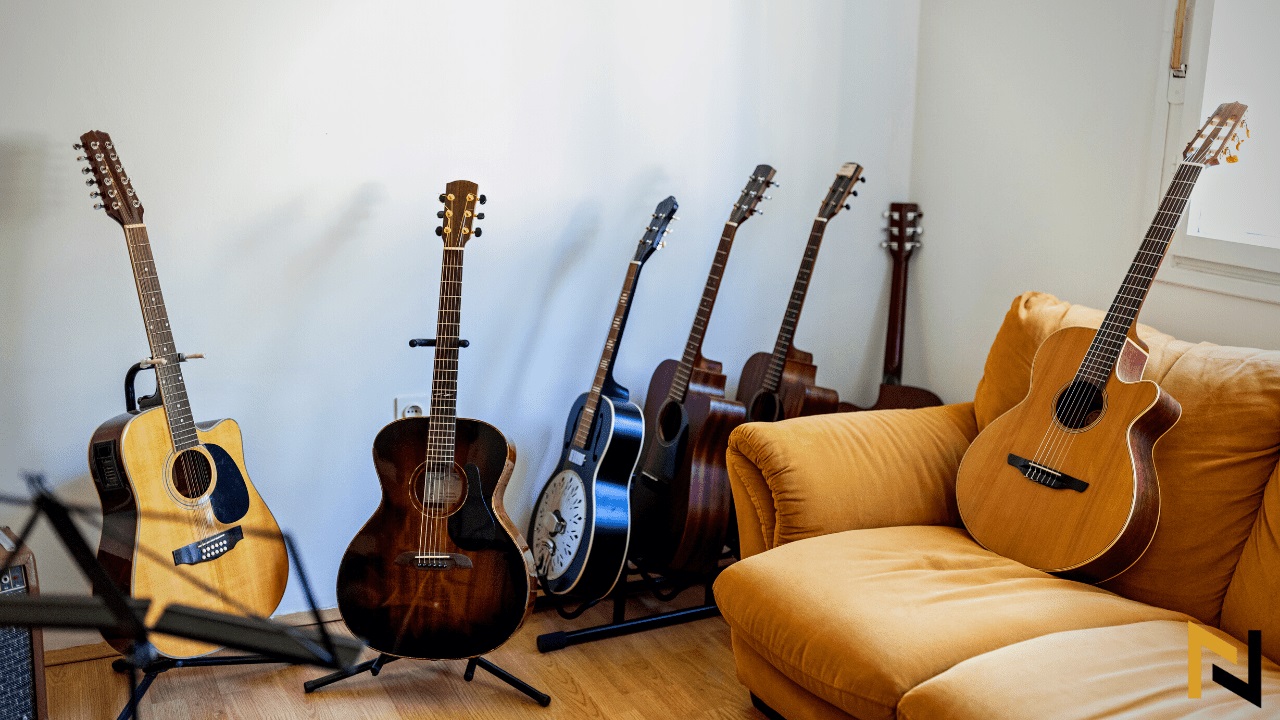

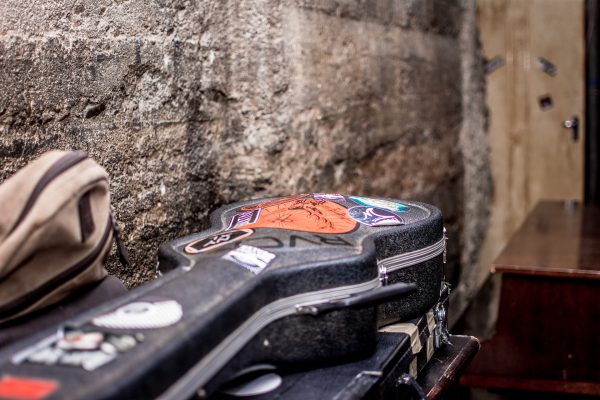

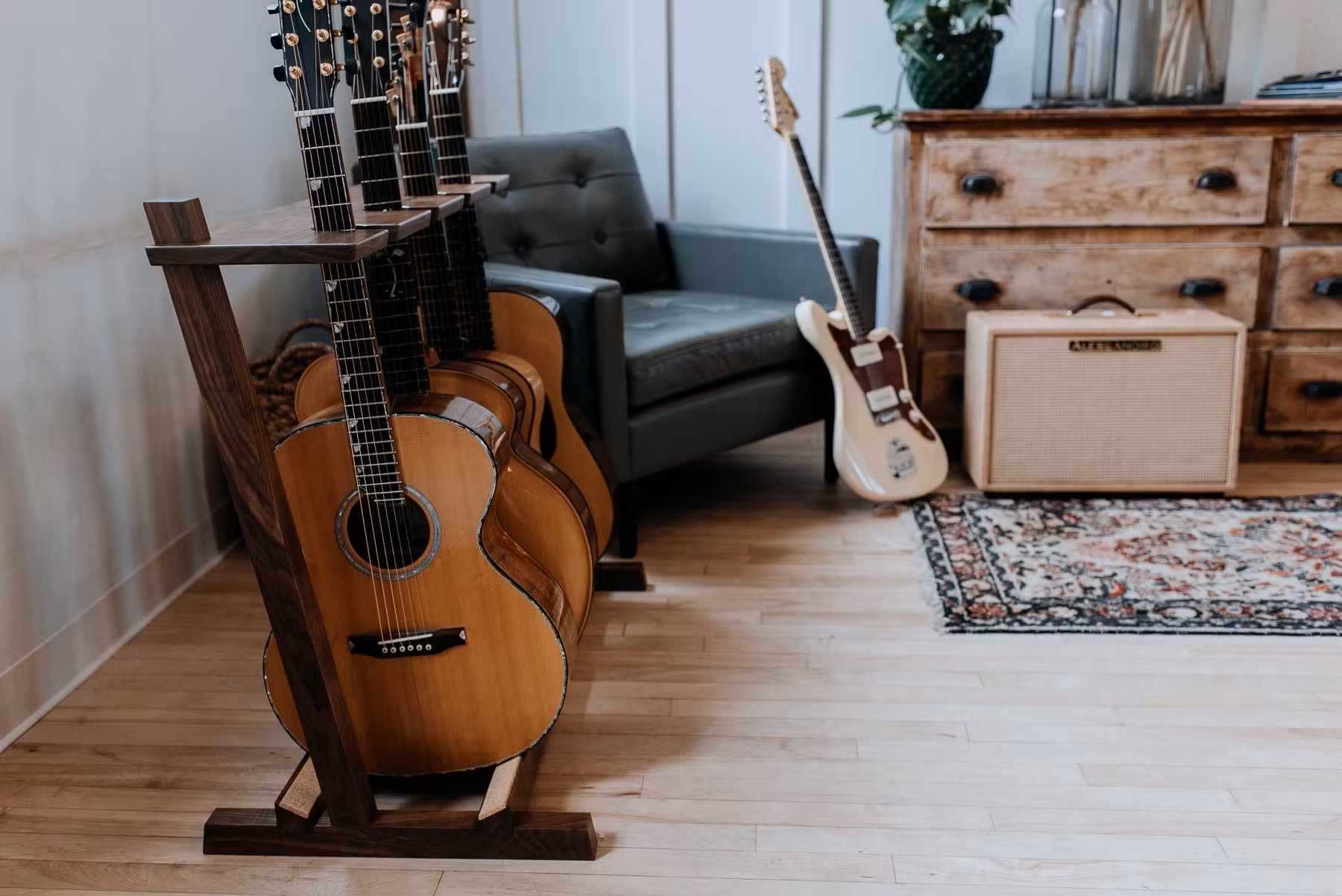
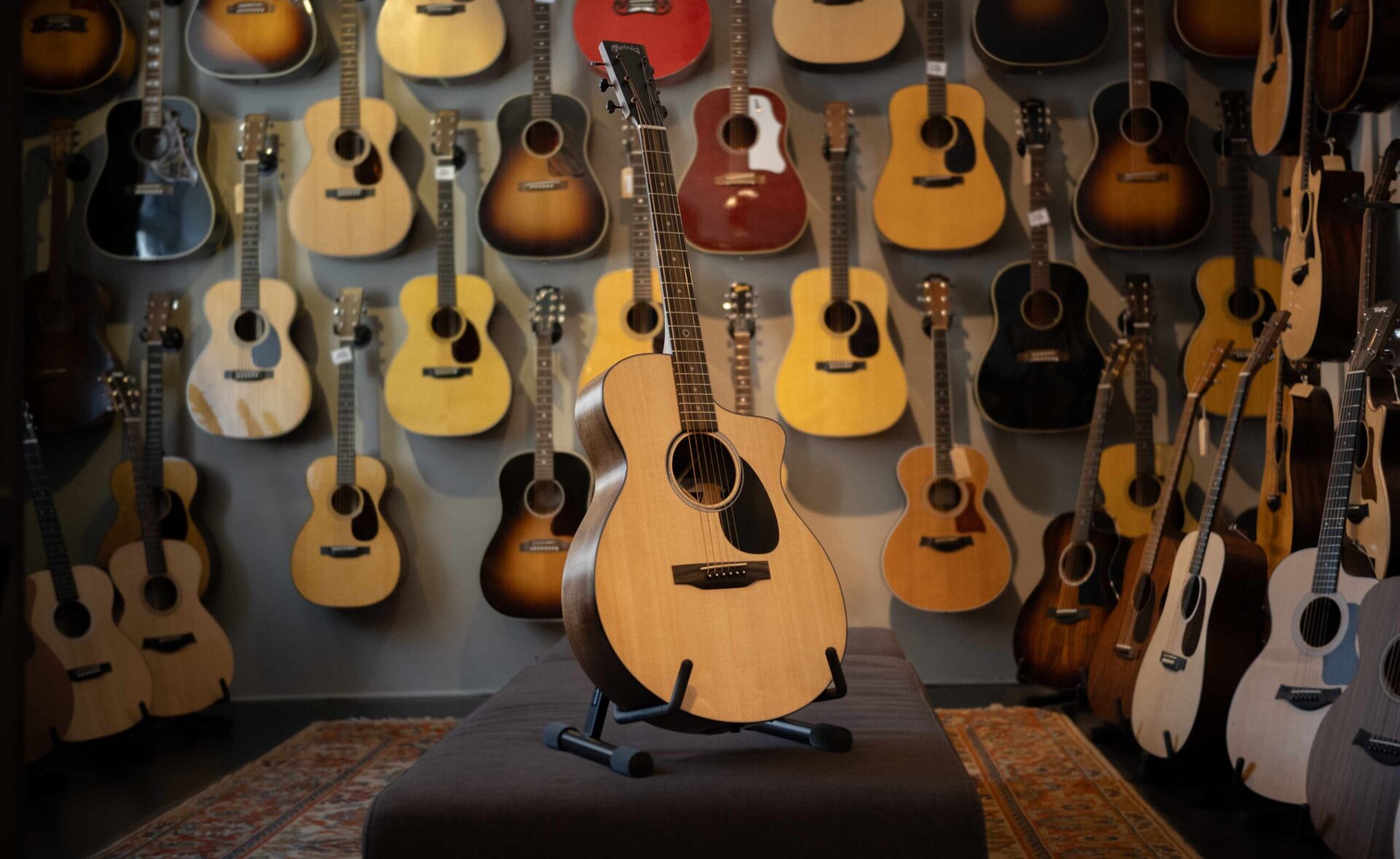
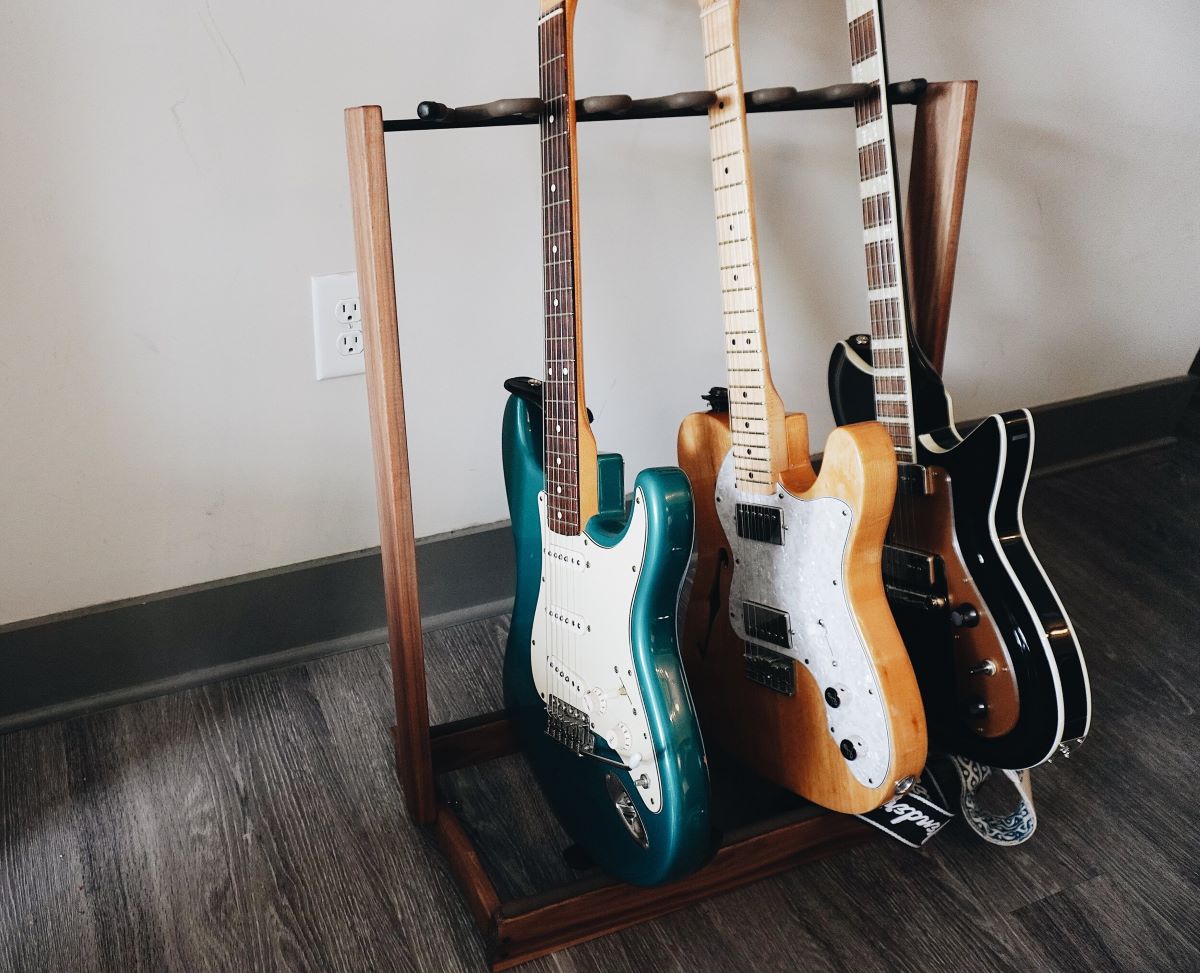


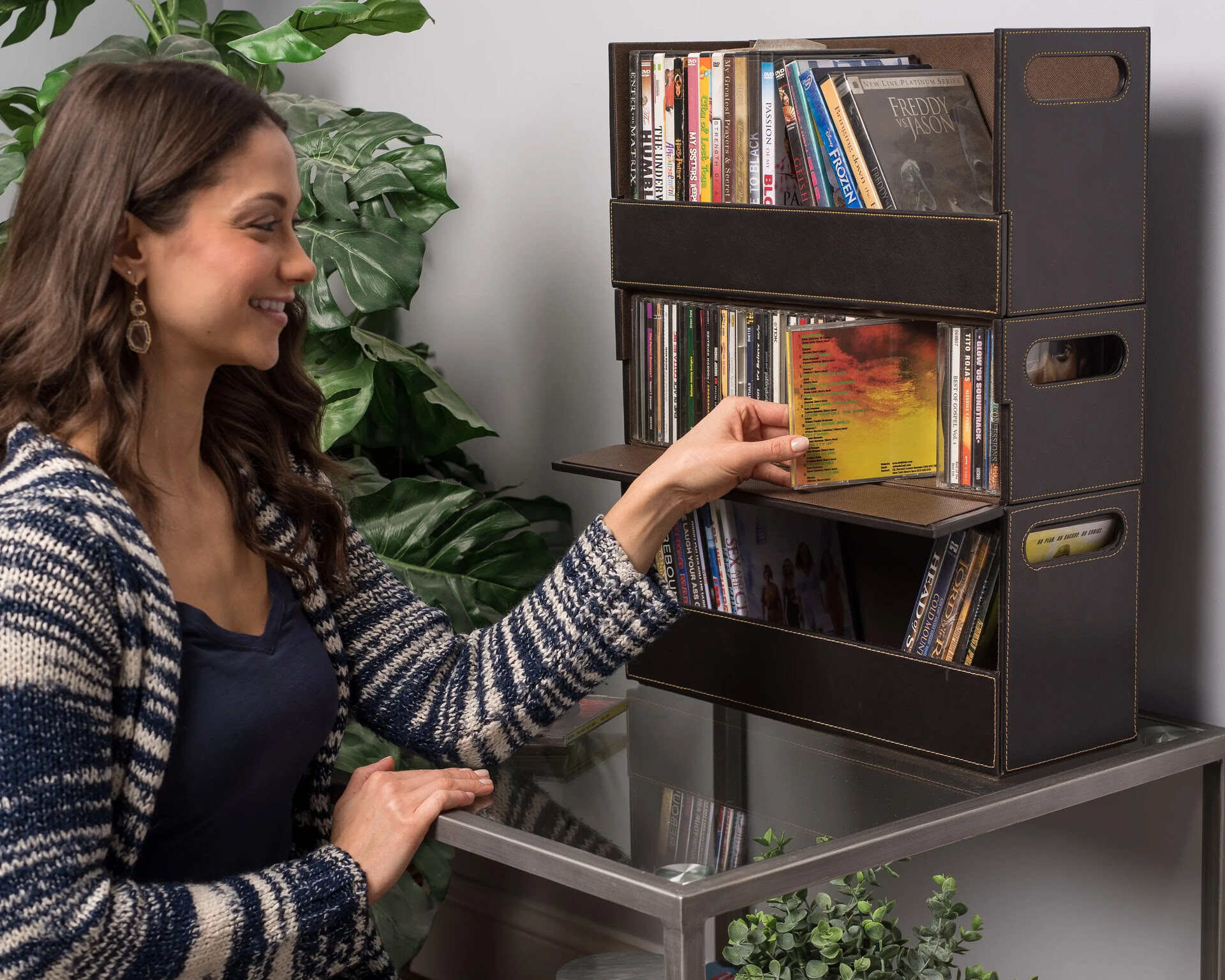

0 thoughts on “How To Store A Guitar Without A Case Or Stand”